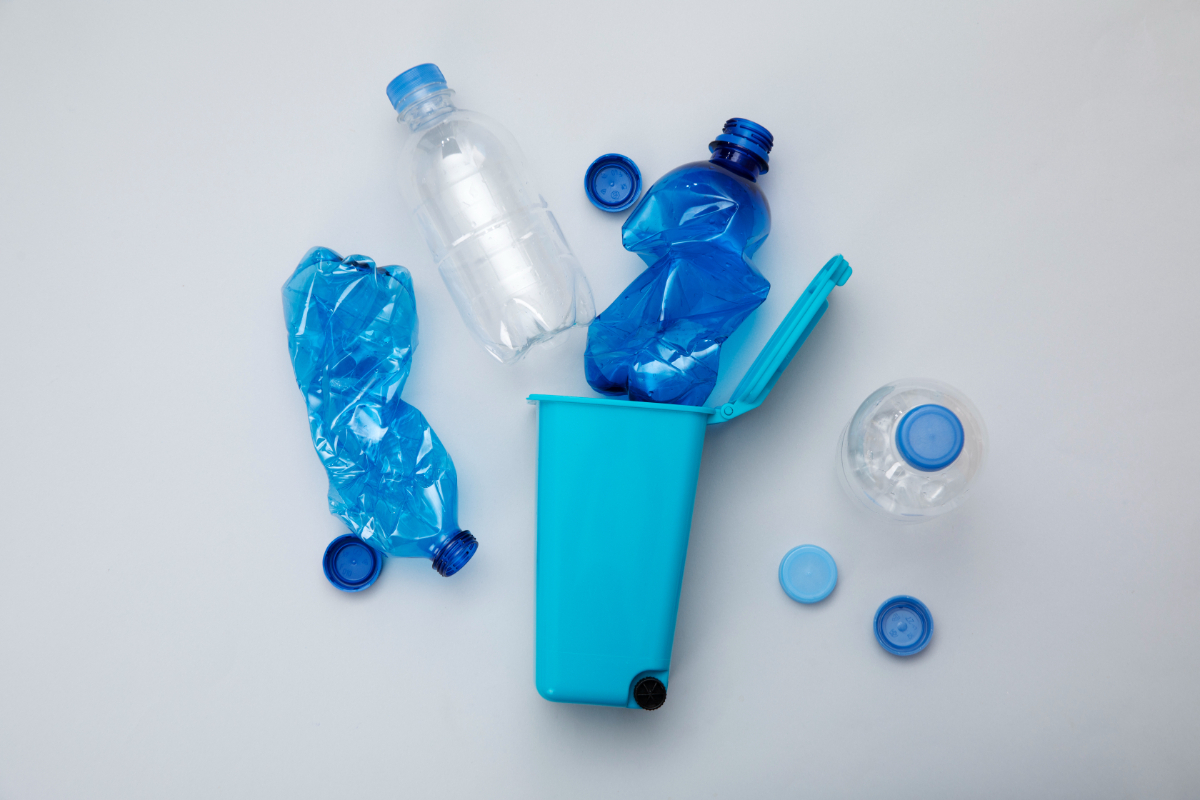 Add My Company
Add My Company
What Is The Best Material For Plastic?

What is the best material for plastic? We explain the properties and uses of the top plastic materials. Plastics By Design Ltd provide trusted vacuum forming services throughout the UK. Find out which material is right for your plastic requirements.
What Is The Best Material For Plastic?
Polymers are used to create all plastics. A polymer is a chemical molecule that can be either manufactured or naturally occurring that comprises plenty of similar molecular repeating units. They can be designed to biodegrade or not, and they can be created from renewable (bio-based) or non-renewable (oil) materials.
The packaging and plastic products we have in our homes are made of polymers that have been moulded or moulded by pressure and temperature. Plastics come in a wide variety of forms depending on the type of polymer they are composed of.
The choice of plastic is mostly based on its unique qualities; although many other materials can be used to manufacture plastic, PET is the most popular because of its high strength and toughness, dimensional stability, abrasion and heat resistance, and low creep at high temperatures. Despite being the most popular and arguably the greatest material, each one has advantages and disadvantages that affect how, when, and for what purposes it may be used.
The Top Plastic Materials:
Acrylic (PMMA)
Strong, transparent thermoplastic known as acrylic serves as a lightweight, break-resistant substitute for glass. Additionally, this material has outstanding optical clarity, allowing a large amount of light to travel through.
Acrylic also withstands the weather and ultraviolet (UV) rays. PMMA is another moniker for acrylic, as is its full chemical name, poly(methyl methacrylate).
Acrylic can resist contact with water, unlike certain polymers; it's also capable of holding precise tolerances in this injection-moulded material.
PMMA is incapable of withstanding chemicals or absorbing odours. Grease and oils may also mark it readily; despite having high tensile strength, acrylic is vulnerable to stress cracking when subjected to strong loads.

Nylon (Polyamide, PA)
Nylon is a synthetic polyamide (PA) with excellent fatigue resistance, noise-dampening qualities, high abrasion resistance, and toughness. Although there are types of nylon that are flame retardant, nylon is not naturally flame resistant. Similar to how nylon may be damaged by sunshine, it can function better outside by adding a UV stabiliser.
Nylon is not as resistant to strong acids and bases as other polymers; in terms of strength and impact resistance, nylon falls short of polypropylene and polycarbonate. Nylon is prone to shrinkage and insufficient mould filling, which makes the material difficult to inject mould. Strong mechanical components including bearings, bushings, gears, and slides frequently use nylon.
It works well for dynamic components, threaded inserts, casings and snap-fit closures. Additional uses include everything from wheels and toothbrushes to electrical cables and implants. Injected-moulded nylon is used in high-friction and wear applications due to its low coefficient of friction. There are four primary grades of nylon, and each has a few mechanical characteristics that vary.
Outdoor applications use Nylon 11, which resists dimensional changes better. Of the four grades of nylon, Nylon 12 has the lowest melting point and is water-repellent. The greatest operating temperature is for Nylon 46. High melting point nylon 66 is resistant to chemical processing acids. Glass fibres can also be used to fill nylon to increase its mechanical strength.
Acrylonitrile Butadiene Styrene (ABS)
Engineering-grade ABS is a material that is simple to mould and has a relatively low melting point. The use of colourants, as well as different textures and surface treatments, is supported by this opaque polymer.
Its butadiene percentage provides remarkable hardness, even at low temperatures, and its styrene concentration gives injection-moulded components a bright appearance.
ABS is renowned for its durability and resilience to impacts, however, it has weak UV, water, and weather resistance. Injection moulded ABS is not a viable option for outdoor applications when compared to acrylic.
In addition to producing a lot of smoke when burned, ABS is less resistant to intense friction than nylon. Keyboards, protective headgear, wall plates and dashboards are all made from injection-moulded ABS. Additionally, it is utilised in consumer items, athletic gear, and industrial fittings.

Polycarbonate (PC)
Natural transparency, strength, and portability characterise polycarbonate. When coloured, this plastic material keeps its colour and strength while still having optical characteristics to assist light transmission. Polycarbonate is far more durable and stronger than glass, while not being scratch-resistant.
Since polycarbonate (PC) retains its physical characteristics across a larger temperature range, it is used in place of acrylic. Although PC needs to be processed at high temperatures, moulding can be more costly. However, polycarbonate allows fine dimensional control for tighter tolerances because of its predictable and uniform shrinking.
Machinery guards, windows, diffusers and light pipes are all made of polycarbonate plastic. Additionally, it can be used to make transparent moulds for silicone and urethane castings. It's not advisable to prepare or store food in polycarbonate since it contains the chemical bisphenol A (BPA).
Polyethylene (PE)
The most used plastic in the world is polyethylene, which is also a commercial polymer that may be chosen based on density.
High-density polyethylene (HDPE) and low-density polyethylene (LDPE) offer chemical resistance, but their hardness, flexibility, melting temperature, and optical transparency are different. Polyethylene terephthalate can be as transparent as glass, much as LDPE.
All three types of plastic - HDPE, LDPE, and PET - resist chemicals and moisture, although LDPE is softer and more malleable than HDPE, which is an opaque substance.
Due to their weak UV protection, PE polymers could only be suitable for indoor applications. Injection moulded polyethylene is used in items like toys, food containers and automobile parts.

Polyoxymethylene (POM)
Acetal is another name for engineering plastic polyoxymethylene (POM). It features a low coefficient of friction and great thermal stability in addition to stiffness. Additionally, this plastic has strong chemical resistance and a low water absorption rate. POM plastics are transparent and white by nature,and have an opaque look.
Acetal plastics come in two primary categories; both types of material have considerable shrinkage during injection moulding. Injection-moulded POM is utilised in bearings, gears, conveyor belts, and pulley wheels because of its low coefficient of friction.
Fasteners, eyeglass frames, knife and handgun parts, lock systems, and high-performance engineering components are further used. Injection moulded POM's outdoor uses is constrained since it is not sun-resistant. Acetals are very thermally expandable and have poor impact strength in their pure form. To increase strength and stiffness, POM is also available in grades that have fibreglass or minerals added as reinforcement.
Polypropylene (PP)
The second most used plastic in the world is polypropylene, it has a high melting point, strong chemical resistance and won't break down when exposed to dampness or water. PP, commonly known as injected moulded polypro, is recyclable.
Despite its relative benefits, polypropylene is very combustible and UV-sensitive. This injection-moulded plastic degrades into toxic aromatic hydrocarbons like benzene and toluene at temperatures over 100 °C.

Polystyrene (PS)
Plastics made of polystyrene are affordable, lightweight, and impervious to dampness. These polymers offer high gamma radiation resistance and strong chemical resistance to dilute acids and bases. General-purpose polystyrene (GPPS) and high-impact polystyrene (HIPS) are the two primary varieties of polystyrene.
GPPS is less dimensionally stable and brittle than HIPS, which is made using butadiene rubber to improve its material characteristics. While HIPS is opaque, GPPS also possesses a clarity that is similar to glass. Medical, optical, electrical, and electronic applications all make use of polystyrene.
HIPS is utilised with equipment and appliances because of its increased impact strength. Plastic trays, cases, and toys are made with GPPS that has been injection moulded. However, both substances are combustible and vulnerable to UV deterioration.
Thermoplastic Elastomer (TPE)
TPE is a composite material made of rubber and plastic. Although it is produced like plastic, it possesses rubber-like characteristics and functions.
TPE, commonly referred to as thermoplastic rubber (TPR), can be stretched before snapping back into place when the force is released. TPE also lends itself to frequent recycling. TPE is simpler and less costly to mould than liquid silicone rubber (LSR).
TPE is nonetheless prone to creep, a solid material's propensity to distort, under prolonged strain. TPE tends to cost more than other materials for plastic injection moulding.
It also loses some of its elastic characteristics at higher temperatures. TPEs that are injected into moulds are used to make footwear, medical equipment, vehicle parts, and pet goods. The use of shock dust boots and weather seals in automobiles. Ventilation masks, catheters, valves, and breathing tubes are examples of medical equipment.

Thermoplastic Polyurethane (TPU)
Due to its ubiquity, TPU is a subtype of TPE that is frequently mentioned. Although it has an elasticity similar to rubber, it can be used in place of hard rubber. TPU that has been injection moulded also offers strong load-bearing capacity and ozone resistance.
TPU is more resistant to high heat and chemicals than TPE is. TPUs, however, could be stiff for some injection-moulded components. Additionally, thermoplastic polyurethanes have a higher cost and must be dried before processing. Shoes, gaskets, caster wheels, and sporting items all use TPUs that have been injection moulded. Cases or enclosures for electronics and medical equipment are other applications.
TPUs are employed in place of polyvinyl chloride (PVC), a material that might irritate the skin, in medical applications. There are commercial, medical, and industrial grades of thermoplastic polyurethanes. TPU materials fall into three categories: polyester, polyether, and polycaprolactone.
For more information on What Is The Best Material For Plastic? talk to Plastics By Design Ltd

